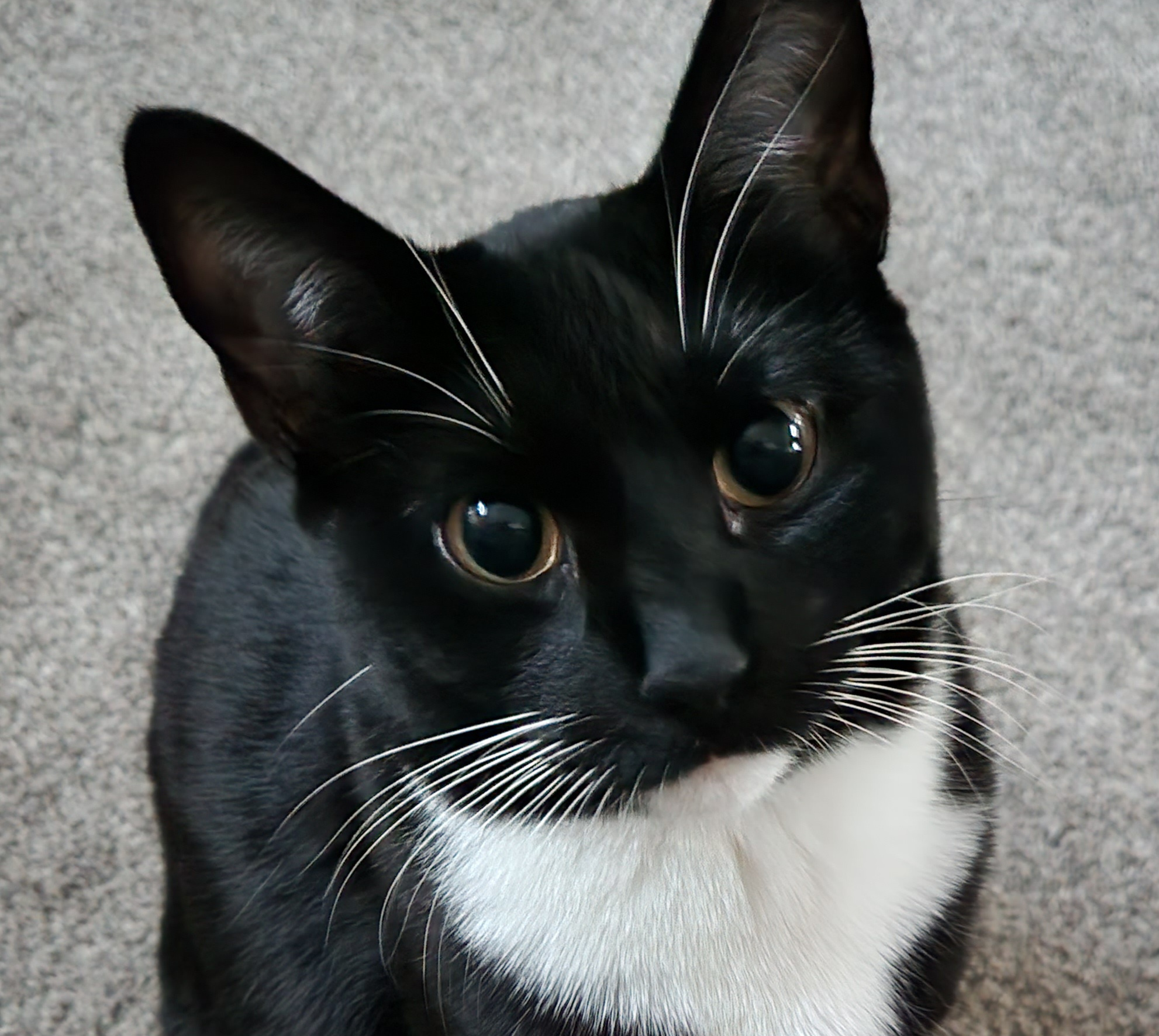I’m starting this off by saying that I’m looking for any type of reasonably advanced photo manipulation tool, that runs natively under Linux. It doesn’t have to be FOSS.
I switched to Linux, from Windows, about three years ago. I don’t regret the decision whatsoever. However, one thing that has not gotten me away from Windows entirely, is the severe lack of photo editing tools.
So what’s available? Well, you have GIMP. And then there’s Krita, but that’s more of a drawing software. And then…
Well that’s it. As far as I know.
1. GIMP
Now, as someone migrating from Photoshop, GIMP was incredibly frustrating, and I didn’t understand anything even after a few weeks of trying to get into it. Development seemed really slow, too. It’s far from intuitive, and things that really should take a few steps, seemingly takes twenty (like wrapping text on a path? Should that really be that difficult?).
I would assume if you’re starting off with GIMP, having never touched Photoshop, then it’d be no issue. But as a user migrating, I really can’t find myself spending months upon months to learn this program. It’s not viable for me.
No hate against GIMP, I’m sure it works wonders for those who have managed to learn it. But I can’t see myself using it, and I don’t find myself comfortable within it, as someone migrating from Photoshop.
2. Krita
Krita, on the other hand, I like much more. But, it’s more of a drawing program. Its development is more focused on drawing, and It’s missing some features that I want - namely selection tools. Filters are good, but I find G’MIC really slow. It also really chugs when working with large files.
Both of these programs are FOSS. I like that. I like FOSS software. But, apart from that, are there really no good alternatives to Photoshop? Again, doesn’t need to be FOSS. I understand more complex programs take more development power, and I have no problem using something even paid and proprietary, as long as it runs on Linux natively.
I’ve tried running Photoshop under WINE, and it works - barely. For quick edits, it might work fine. But not for the work I do.
So I raise the question again. Are there no good alternatives to Photoshop? And then I raise a follow-up question, that you may or may not want to answer: If not, why?
Thanks in advance!
Adobe’s annual revenue is over 18 billion dollars Gimp has one developer who is almost full time and various part time contributions. One answer is that Linux support would be both non-trivial and would only add 1-3% to revenue for a multi platform editor. There WAS a reputably professional editor bloom.app at one point but it seems to have died.
GIMP has its share of issues, just like any other software. but it’s biggest issue is that somewhere down the line general users got this idea in their head that it was supposed to be a Photoshop clone.
So they go into it with certain expectations and then get frustrated when it doesn’t work that way. People like me, who actually learned GIMP before PS, obviously didn’t go in with the same bias and therefore have a much better grasp on it.
Gimp is not a Photoshop clone. it’s its own piece of kit with it’s own design and feature decisions that some may like and others may not. That’s life. The developers have no obligation to follow any other software design scheme any more than Sony is obligated to follow LGs TV UI. They’re not clones, they’re alternatives.
if you think Gimps only function is to copy Photoshop, you’re in for a bad time. If you want to use gimp as an ALTERNATIVE and go in without the bias, you’ll likely learn your way around a LOT faster.
I’m not excusing Gimps failings. far from it. but I AM saying that half the issue is the Photoshop users thinking that gimp only exists to copy everything from their precious Adobe daddy. And that’s simply not true.
Honestly I feel like this attitude is the reason GIMP’s UX suffers. They’re so determined to be “not like photoshop” that they’re unwilling to fix some of their more boneheaded UI decisions out of fear that they’d be seen as copying photoshop.
That’s not exactly my impression from following the design conversations through the years. They’re more approaching decisions from the angle of what they think is best, their philosophy is to plainly ignore what others do and follow their own direction. Of course taking inspiration from Photoshop might sometimes be a good thing, if it doesn’t conflict with the GIMP way of doing things.
I’ve noticed in recent years some newcomer devs have had discussions on how to design their contributions, mentioning Photoshop and other alternative ways and there were just conversations about the merits of the different approaches that could be taken and what would fit the GIMP best, without bias.
Anyway, I wasn’t aware that GIMP UX suffers, I’ve never used anything else and am happy with it. It seem logical to me, obviously with fewer features than Photoshop but how much can a couple of guys do and they’ve had to refactor most of the GIMP for 3.0, but that’ll open up for a lot of functionality being added moving forward…
Anyway, I wasn’t aware that GIMP UX suffers, I’ve never used anything else and am happy with it.
My argument here is that by never having used anything else, you wouldn’t necessarily realize how much better other UX choices could have been.
That said, I do have to give the devs some credit, as they have fixed two major issues, by adding single-window-mode and unifying the transform tools. Having each transform be its own separate tool was just awful UX IMO.
The biggest remaining UX problem, in my opinion, is the way GIMP forces layers to have fixed boundaries. Literally no other layer-based image editor has fixed layer boundaries, because it makes very little sense as a concept. Layers should solely be defined by their content, not by arbitrary layer properties set in a dialog box.
I think one of the most insidious things about Photoshop is that it is a powerful, complex program. Using it is a skill. Which means that even if you think you are getting the better of Adobe by pirating their software, you are still building your own skills with their program, which is so full of features that classes can be taught about using it. In the end, that’s a win for Adobe and their proprietary software, because if you end up getting good enough to make money from that program, you will end up finding yourself in a position where you eventually pay them, or work for someone who does. This is to the detriment of any other photo editor, of course. You won’t care about how good GIMP or anything else is, much less fund it, because you won’t want to use it, because you know Photoshop.
If I had deep wallets I would love to start funding GIMP for development and rebranding. But I don’t have that kind of cash to push around :P
I’ve read that part of why GIMP is the way it is is because it’s meant to be a testbed for the GTK UI library, so features are added to use new UI elements as much as they are to aid photo manipulation, and in some cases it’s considered preferable to use a weird widget so it’s got a test case rather than whichever widget leads to the best UX. I don’t think I’ve ever looked for a more definitive source than a Lemmy/Reddit comment, but it’s at least consistent with my experience of using GIMP.
Gtk started as the Gimp Tool Kit but I don’t think there has been any real connection for ages. We’re taking about 1997 or something.
GIMP is beyond stale and it’s frustrating to see people recommend it as an “alternative” to Photoshop when it’s about as actively developed as X11. The fact it’s making rounds on FOSS news channels/sites because they ported the UI to GTK 3 (Which was replaced by GTK4 3 years ago now) is really a sign of how bad the project has gotten.
Photopea is a near feature-for-feature clone of Photoshop, designed around the superior UX and UI of photoshop, and all within a webapp that leverages hardware acceleration. All done by a single person. The downside is that it’s a proprietary webapp that costs money to use without ads clogging half the screen.
And you know what? I STILL prefer Photopea to GIMP, after using the latter for years. GIMP is old, slow, and pretty much dead in the water and I’m certain that they’d have produced 3.0 faster if someone had rewritten it over a weekend instead of trying to port the godawful mess of tech debt that must be going on inside the GIMP project atm.-
Photoshop getting better support via WINE/Proton is more likely than GIMP ever returning to its hay-day of being a true competitor to PS.
Downside of Photopea is it’s not open-source (mainly because the creator needs ad revenue to run it, but I digress)
I had the same experience moving from GIMP to Photoshop. 😂
deleted by creator
It’s true but programmers will tell artists that we’re just too lazy to learn a new UI lol.
deleted by creator
The other comments here just explained two simple ways to do it in GIMP, so it kinda sounds like the programmers are right
If I want to erase the white around an object
Funny, this is literally one of the primary examples of something that GIMP did better than Photoshop (at least back when I was actively using GIMP a lot). GIMP has the “color-to-alpha” tool that allows for backgrounds to be faded into transparency (including converting the border of that object into translucent pixels that don’t have the hint of the old background), which I remember being the easiest way to remove sky or other background from an object, and to place that object into a new background or other image.
I’m guessing that in the 10 years since, Photoshop has a bunch of those AI tools that can do that specific function almost automatically. But GIMP does do that specific task pretty well.
Erasing the white around an object is crazy easy in GIMP. select color, delete. done. That’s one task that is easier in GIMP then in Photoshop in my opinion.
deleted by creator
GIMP has the closest thing to feature parity. If you’re looking for similarity of UI and workflow, you’re not going to get it. Adobe throws millions of dollars that open-source projects don’t have at streamlining their UI. UI specialists that will work for free are unicorns, so most open-source UIs are designed by volunteer generalist programmers. Which means that said UI gets the job done, but isn’t optimized for the workflow of people who don’t think like the original programmers.
Personally, I might shift the same picture through Darktable, GIMP, Inkscape, and even Scribus, depending on what I was trying to do with it. (Text on a path -> probably Inkscape, then export as PNG and import into GIMP as a layer.) Is that less convenient than performing all the operations in one program? Possibly, but since I don’t like Photoshop’s UI either, I’m willing to give up on “one-stop shopping”.
(So who, for my money, had the best UI? Probably Paint Shop Pro, twenty or so years ago when it still belonged to JASC. Of course, it was a simpler program too, and so had less junk in its interface.)
Fact is, if you’re a pro, you’ve invested years into learning Photoshop’s interface and how to get the best results out of it. You’re in the position of a baseball player who’s decided to start all over again with basketball. Any attempt to transition to other software is going to be really, really frustrating for you, and likely drop your productivity into the toilet for a few months at least. Plus, you’re going to need some features that average users don’t care about, especially if you’re preparing work for print.
I hate to say it, but you may honestly be best off running Photoshop in a VM rather than trying to move to other software, at least until you can set aside a couple of months where you have no urgent projects (if that ever happens).
It mostly depends on what features of Photoshop you use. If you use most of them, there’s no real alternative imo. If you only use a subset of its features, then GIMP, Krita, Photopea or Pinta may become viable alternatives for your use case.
Guy that made the Pantone port after that whole fiasco also made the pinkest pink and blackest black paints money can buy. His company is currently developing an alternative to Photoshop, InDesign, Illustrator, aaaand… I think Premiere?
It’s being developed under the brand “Abode”
That’s an amusing name but if they take a photoshop competitor to market using that name they’re going to lose a trademark dispute in milliseconds.
“Abode” is just an English word, so they can’t trademark it anyway.
You can trademark dictionary words.
You can’t trademark anything too generic, like you might struggle to trademark a drink called “drink” or something (although you might be able to trademark, eg, shoes called “drink”!), but there’s nothing stopping you trademarking words.
Oh, and, Adobe is an english word, too.
Link to the project:
There’s also
Looks like a cash grab tbh
if learning gimp is such a roadblock then i doubt anything will seem good to you. it really sounds like you’re looking for a clone of photoshop, rather than an alternative to photoshop, and i don’t think such a thing exists. any reasonably complicated software will have a learning curve to it, so you may need to pick between continuing to use windows and photoshop, or putting more time than you’d rather into learning something new.
as to why there aren’t any clones of photoshop, i expect it is because it would be a lot of work, and they’d constantly be scrambling one step behind to implement whatever updates photoshop gets, so no matter how much effort was put into such a project, it’d still get viewed as a second rate copy of photoshop. if you want to make a graphics program, might as well focus on making it good and making it your own, rather than chasing adobe’s coat-tails, y’know?
They’re two different tools, yeah - I get that. But in the end, I want them to do the same thing. Think just, I’ve learned how to use a screwdriver over the years. I’m fast and efficient with the screwdriver, and I find it reliable. But now, I’m forced to learn to use a hammer. Both will, in the end, achieve similar results.
Okay, maybe I’m just going to have to learn how to use a hammer then? That would be no problem - if the hammer wasn’t such an unintuitive mess of a tool that just doesn’t work like how I would expect it to. It’s just going to take a lot of time, that I really don’t want to invest, just to “get comfortable” with the large drawbacks this hammer has.
I’m not opposed to learning a new tool. I’m opposed to learning a tool which just gets in the way, over and over.
Your comparison is out of whack.
You’re comparing brands of screwdrivers with different shapes of handles, instead of screwdrivers and hammers.
There are no alternatives that are hidden gems, they would have risen to the top. GIMP is it.
I have switched to GIMP many years ago and by now Photoshop is what feels weird. That’s simply a factor of the unknown. If you are not willing to learn a new flow, then I’m pretty sure you will disregard anything that isn’t Photoshop itself.
Perhaps install a VM in VirtualBox and set it to seamless mode.
Gimp is really powerful. What are you missing from it?
habit and practice. op himself said he believes gimp can do wonders, but he’s migrating from adobe and is accustomed to photoshop’s shortcuts, ui and workflow.
imho, people go wrong expecting same experience in different application. yes, gimp works very differently but when migrating, one should count on different ui and logic. afterall, ps also have learning curve in the start and none complains.
it’s similar to users migrating from windows to linux, expecting same windows ui and workflow, blaming linux bad.
yeah, having 30 years of Photoshop experience and then being told I have to learn a whole new tool that looks and works completely differently? it took a very long time to become a master of this one tool. now I have to completely re-learn and re-master a new one?
no thanks.
not to mention that GiMP is just a pain in the ass to use.
But then you cant complain? Just use Photoshop then with Windows or Mac OS and pay the subscription. Problem solved.
photopea.com is actually pretty great, much easier to use than gimp with similar (or even better) feature set.
This exists, but it has the downside of being a web app rather than a native application. Can’t use it offline for instance.
You can use it offline as long as you load it up before going offline.
Photopea runs completely in your device, just like Sketch or Photoshop do. It does not upload any of your files to the internet. You can load Photopea.com, disconnect from the internet and keep using it completely offline. None of your files ever leaves your computer.
If not, why?
How many man-hours of work were already spent in the development of Photoshop, its plugins, etc? How much has that cost? On what scale of time was that spread around? How much money have designers put into them by buying licenses (now subscriptions) of Adobe’s suite?
If you want an alternative for Linux that can match Photoshop, you need to be willing to support the R&D costs that have been paid off by Adobe throughout the decades of its development. Are you willing to do it?











